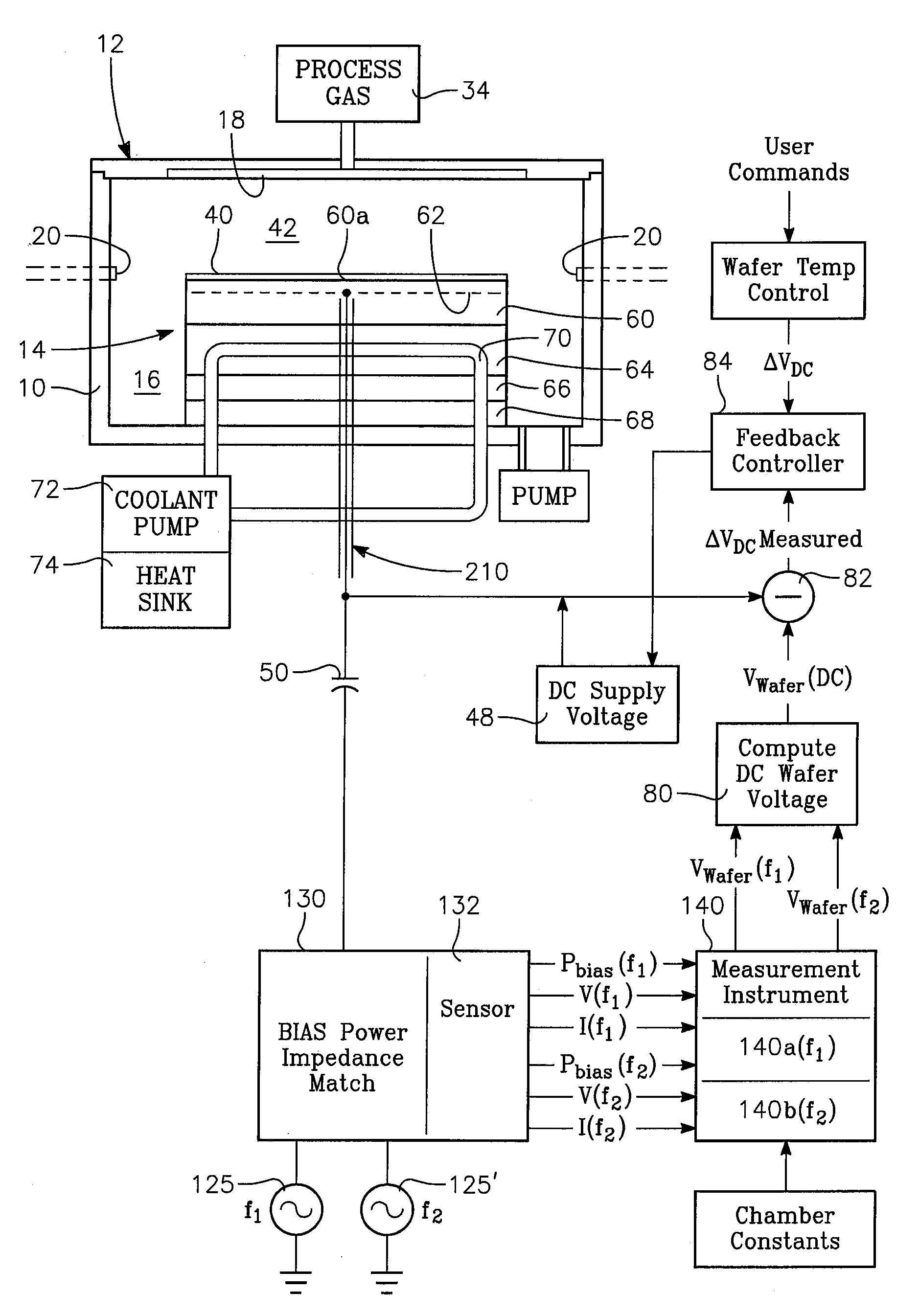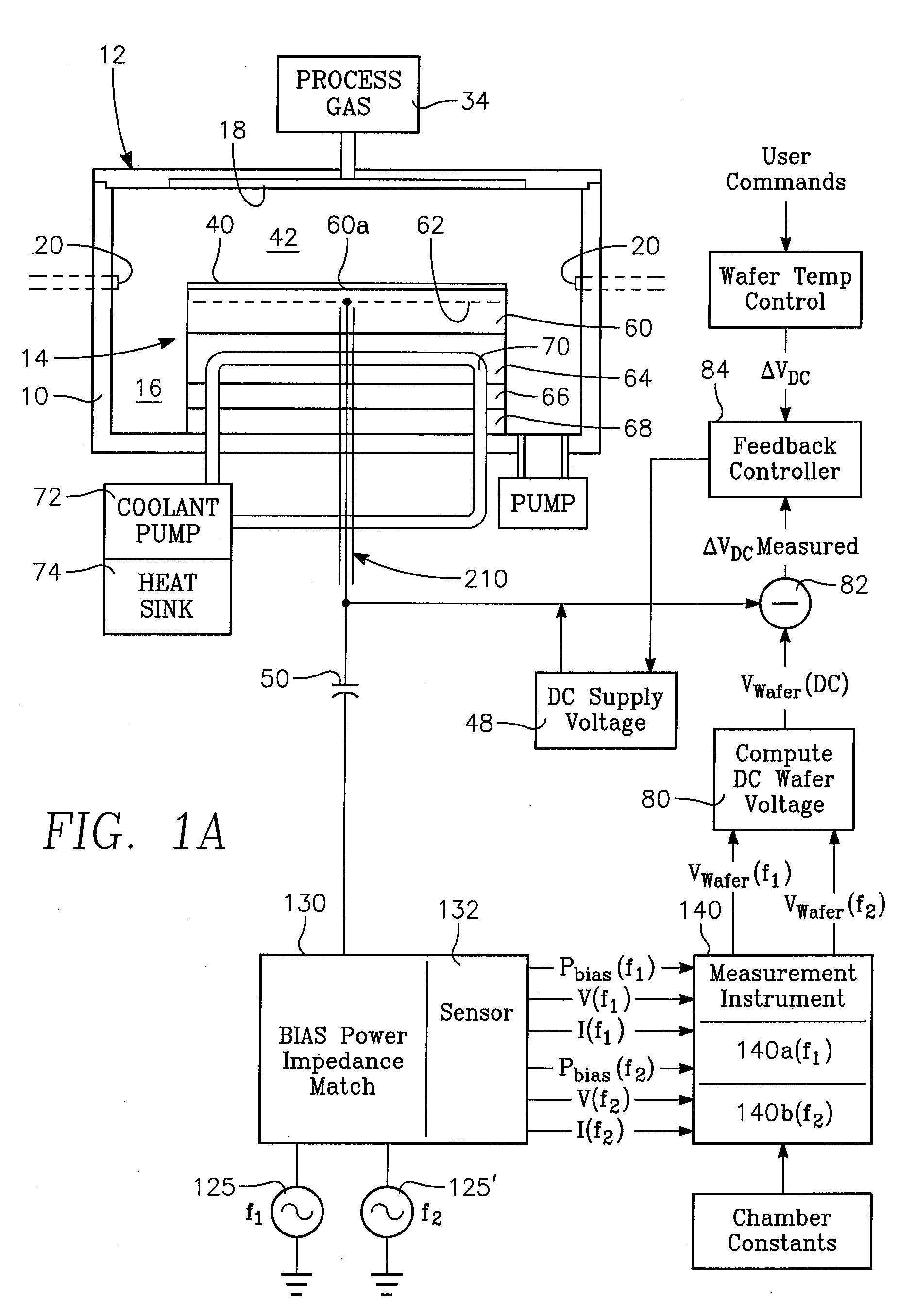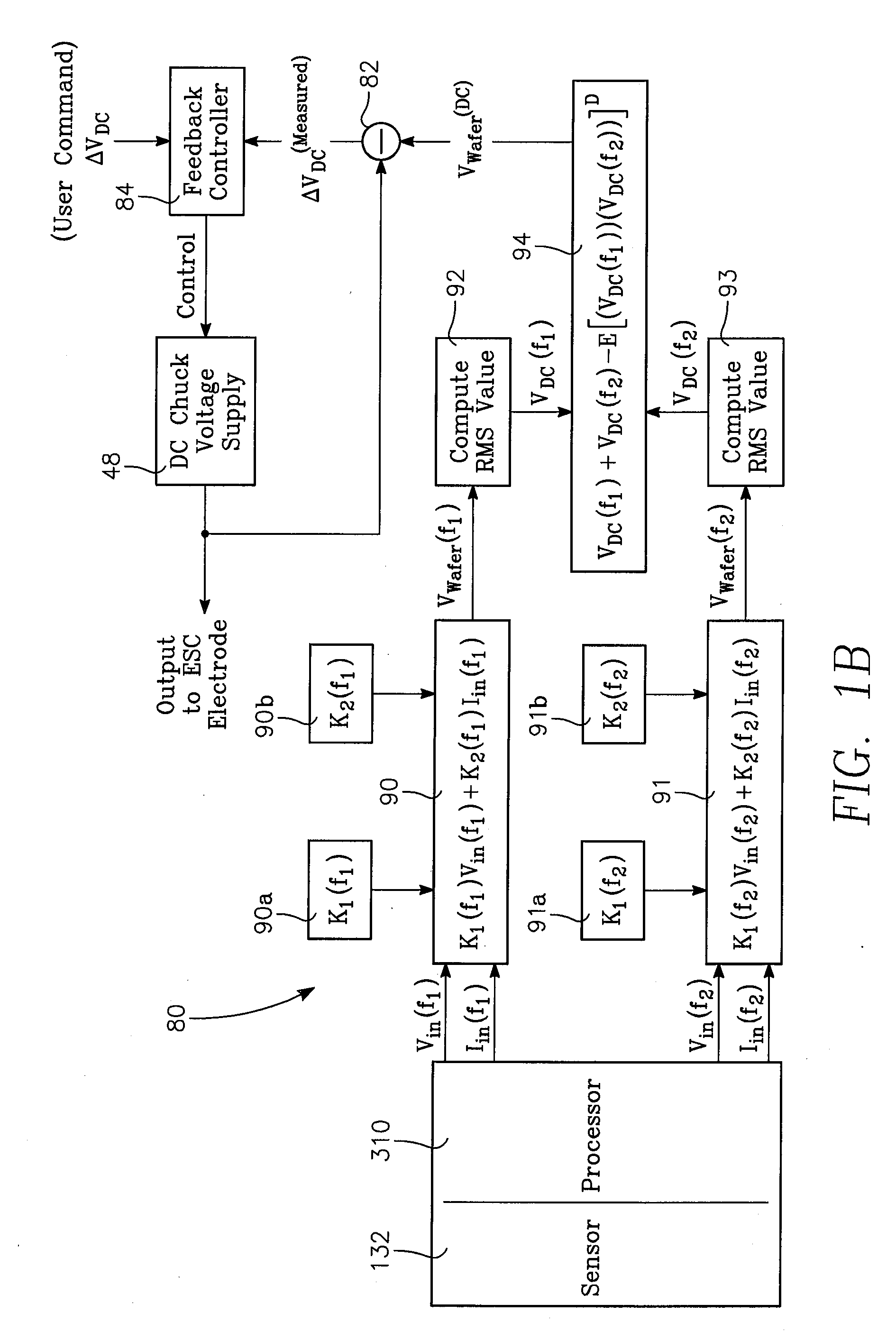Method of feedback control of esc voltage using wafer voltage measurement at the bias supply output
a technology of esc voltage and bias supply, which is applied in the direction of mechanical equipment, variable capacitors, manufacturing tools, etc., can solve the problems of insufficient clamping voltage, risk of damaging the circuit features formed on the wafer surface, and current passing through the wafer, so as to achieve the effect of minimizing the differen
- Summary
- Abstract
- Description
- Claims
- Application Information
AI Technical Summary
Benefits of technology
Problems solved by technology
Method used
Image
Examples
Embodiment Construction
ESC With High Contact Force Wafer Cooling:
[0024]FIG. 1A illustrates a plasma reactor having a cylindrical side wall 10, a ceiling 12 and a wafer contact-cooling electrostatic chuck (ESC) 14. A pumping annulus 16 is defined between the chuck 14 and the sidewall 10. While the wafer contact-cooling electrostatic chuck 14 may be used in any type of plasma reactor or other reactor (such as thermal process reactor), the reactor in the example of FIG. 1A is of the type in which process gases can be introduced through a gas distribution plate 18 (or “showerhead”) forming a large portion of the ceiling 12. Alternatively, the reactor could have gas distribution inlets 20 (dashed lines) that are separate from the ceiling 12. While the wafer contact-cooling electrostatic chuck 14 may be employed in conjunction with any plasma source (not illustrated in the drawing), such as an inductively coupled RF plasma source, a capacitively coupled RF plasma source or a microwave plasma source, or a torroi...
PUM
| Property | Measurement | Unit |
|---|---|---|
| frequency | aaaaa | aaaaa |
| dielectric constant | aaaaa | aaaaa |
| pressure | aaaaa | aaaaa |
Abstract
Description
Claims
Application Information
 Login to View More
Login to View More - R&D
- Intellectual Property
- Life Sciences
- Materials
- Tech Scout
- Unparalleled Data Quality
- Higher Quality Content
- 60% Fewer Hallucinations
Browse by: Latest US Patents, China's latest patents, Technical Efficacy Thesaurus, Application Domain, Technology Topic, Popular Technical Reports.
© 2025 PatSnap. All rights reserved.Legal|Privacy policy|Modern Slavery Act Transparency Statement|Sitemap|About US| Contact US: help@patsnap.com



